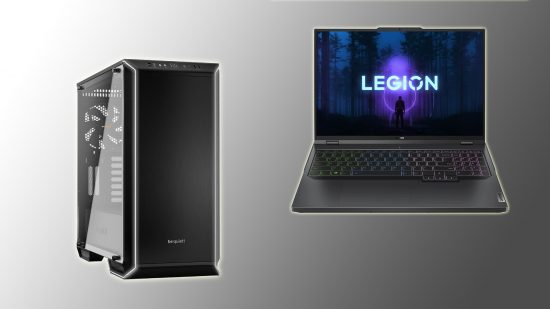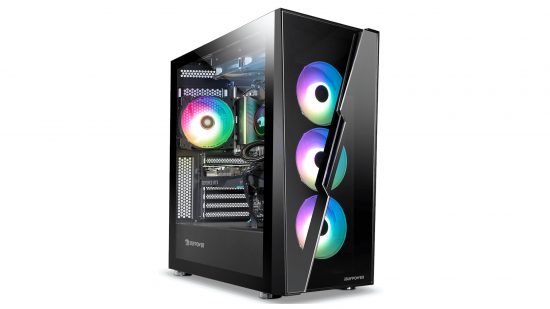Let’s face it; powerful gaming machines of all varieties are expensive purchases and so it’s best to be as informed as possible when looking at parting with your hard-earned cash. We’ve created this gaming PC vs gaming laptop guide to help you answer which is right for you.
Historically, the performance gap between gaming laptops and desktops was enormous, and the question of getting a gaming laptop was one of necessity rather than choice. But in recent years, huge strides have been made in efficiency, with process nodes (machines that make the transistors that components are comprised of) getting smaller and smaller allowing for performant components to draw less power, generate less heat, and importantly, fit inside a laptop chassis.
The gains in this area have been so good that in recent years that some GPUs have seen near parity between the laptop and desktop versions. The RTX 2080 saw only a 10% difference between the two on average. The latest RTX 4000 and RX 7000 series have reversed this trend somewhat with their monstrous power consumption, but given how efficient the Ada Lovelace and RDNA 3 cards are, we may see much smaller deltas between desktop and laptop RTX 4060 and RX 7600 class cards.
There are many, many variables to take into consideration when it comes to choosing the best gaming PC vs the best gaming laptop. You’ll need to consider where you spend most of your free time gaming, your job, whether you are upgrading from a previous machine and the value proposition. We’ve taken a look at all these factors in more detail so you can be sure that your next gaming machine is the best choice for you.
Features
With gaming laptops, the majority of your peripherals are neatly packaged together. Depending on what your working day looks like, you may not even need to take a mouse with you, as trackpads are fast catching up to the formerly unattainable performance of Apple but these are usually limited to the best gaming laptops.
You’ll no doubt need something a bit more precise for gaming so it would be prudent to get the best gaming mouse to click on heads all day.
Speakers are of course integrated into a laptop but more often than not, they don’t sound amazing and so you don’t annoy everyone around you you will probably want to get the best gaming headset. Being more portable, it could be handy to have the best wireless gaming headset in case you need to close your laptop and run out the door. The same can be said for wireless mice, resulting in minimal cabling in your bag, and avoiding tangles altogether.
Laptops are frequently being shipped with high-resolution and refresh rate displays in 16:10 aspect ratios which are great for productivity and gaming due to their extra verticality. Displays of this ilk are hard to find for the desktop outside of enterprise-focused monitors which are unsuited for gaming due to their low response times.
The desktop can make up for this in spades however with having the freedom to pair whatever display you want with your machine and to properly enjoy your games, you’ll want to check out the best gaming monitors.
You can also have complete control over your typing and gaming experience by choosing the best gaming keyboard for you and opting for the exact amount of keys you want – be it full size, TKL, or mini.
Desktop components are also more readily overclockable allowing you to squeeze precious extra performance, especially if you opt for the best CPU coolers and AIO coolers to keep your temperatures low and your frequencies high.
That’s not to say laptops are left in the lurch regarding tweaking your machine, as undervolting is a great way to improve efficiency for battery life and increase your thermal headroom for better-sustained performance. Laptops usually come with webcams too, which can be great if you’re also remote working or streaming.
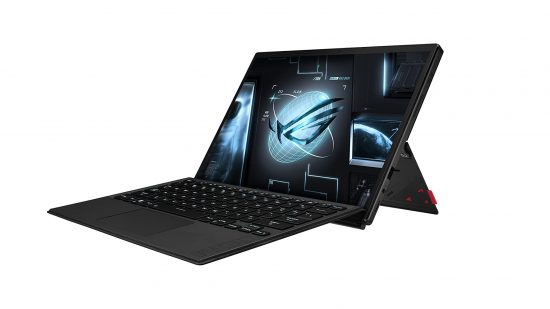
Design
With gaming laptops, you need to pick a design you like and you will be stuck with it until you buy another machine entirely. You can apply skins like those from Dbrand to change the appearance somewhat but that’s about as far as you can go.
As far as laptop design goes, there is a lot to choose from. If you’re gaming on the go, you might want something small like the Asus ROG Flow Z13 for $1,749.99 (£1869.00) which is a ridiculously powerful tablet equipped with an RTX 4050 and Intel i9-13900H.
If you are mostly stationary or hit the iron and can handle the weight, you could go all the way to the other end of the scale with the MSI Raider GE78 HX, a 17-inch, 3.1kg and $3999.99 (£3499.00) behemoth that leaves plenty of room for cooling it’s RTX 4090.
You can of course go for anything in between with 16-inch laptops with 16:10 QHD displays appearing to be the most popular, such as the RTX 4070 equipped Razer Blade 16 for $2,999.99 (£2,900.00) but these days with laptops, if you can dream it, it probably exists.
If you’re doing your own desktop build, then the design lies squarely with you. There are innumerable PC cases out there, different GPU vendors all with different shrouds and coolers, and even different motherboard standards to consider. With so many options, you might want to cut to the chase and check the best graphics cards and best gaming CPUs to get gaming as soon as possible.
There’s also nothing stopping you from building your own case, be it out of metal or wood in any design you could possibly imagine and yes, even a mecha.
If space is a concern, you may want to opt for a smaller case where Micro-ATX and ITX motherboards could serve you well. If you are of the opinion that considering the volume of your machine is for mere mortals and you want multiple PCIe slots for all sorts of add-in card shenanigans, then larger ATX or even XL-ATX motherboards might be in order. No matter the size, we’ve got you covered for the best gaming motherboards in 2023.
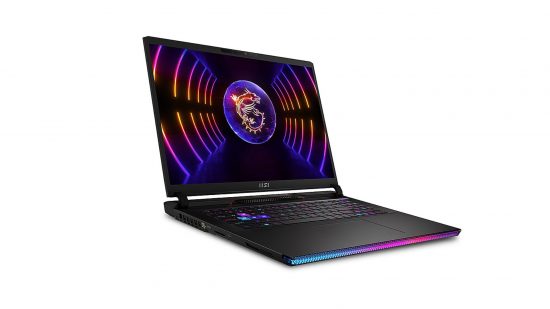
Portability
By their very design, laptops are infinitely more portable than their desktop counterparts. Your computer, monitor, and keyboard are all built into one neat package, with you only really needing to pack the power cable, a mouse, and a headset in your bag.
If you also work from your gaming laptop, this opens up the option of pitching up in a cafe or library for a change of scenery. More modern gaming laptops with enhanced efficiency can even be used away from the plug for many hours, especially if you disable the dedicated GPU and reduce the screen refresh rate – which won’t affect your workflow if you’re just typing.
That’s not to say that desktops can’t be portable too. SFFPCs (small form factor PCs) take desktop components and cram them into some seriously small cases with all kinds of funky cable management and thermal considerations, as can be seen in our guide to the best mini gaming PCs.
If you don’t move around all too often, you could get away with fitting an SFFPC with all your peripherals in one suitcase and lugging it about. It’s definitely a more extreme solution, but it leaves no computing power left on the table.
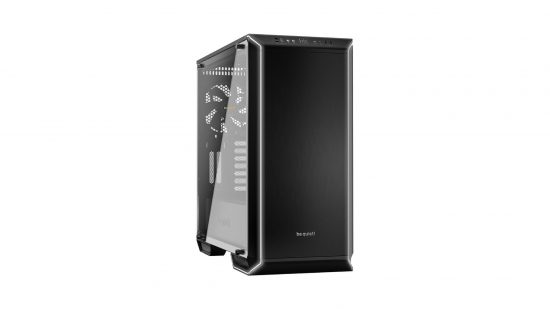
Game Performance
Due to the thermal and power restraints of laptops, desktops are always going to come out on top for game performance – even more so the higher up the stack you go. For example, an Nvidia RTX 4090 has an official power draw of 450W, whereas a laptop-based mobile RTX 4090 can draw ‘only’ up to 175W.
The deceptively named mobile RTX 4090 is actually based on the same AD103 chip that the desktop RTX 4080 uses, so despite sharing its namesake, we see the desktop 4090 pulling ahead by around 35-50% depending on the game due to the extra cores, higher clock speeds and power available to it.
On the upper end of the AMD scale, there are currently no mobile equivalents for the 7900 XT and XTX, yet, but if we look at the previous RDNA 2-based RX 6000 series, the performance delta between the top-end laptop-based RX 6850M XT and upper mid-range RX 6800 XT was about 30-40%.
This is at the absolute top end of the scale however and most gamers are interested in the midrange where you see much lower power consumption. The RTX 4060 Ti for instance has a TDP of 160W which is close to the maximum 175W (including dynamic boost) you typically find in laptops. Laptops don’t have as comprehensive cooling, though, so you can expect to see lower clock speeds to keep your machine from burning itself up.
In short, the less power a desktop GPU requires, the closer the equivalent laptop GPU is in terms of performance, so you may feel like you’re leaving less money on the table for opting for a mobile sweet spot further down the product lineup.
Mobile GPUs are certainly no slouch, and if you choose the right level of performance you need for your games, you’re bound to have a great experience, especially with the proliferation of new technologies such as DLSS, FSR, and XeSS which help our games go further. Just be sure to ensure you have enough VRAM to play your favorite games.
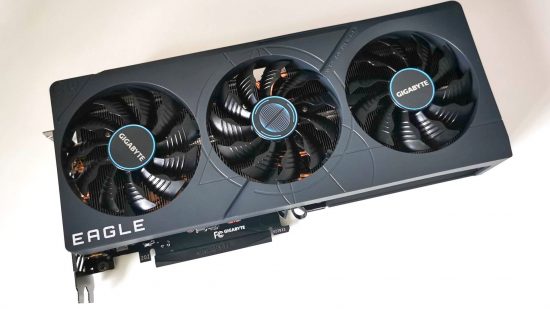
Upgradability
Your options for upgrading a laptop are more limited than with a gaming PC. At most, you can expect to be able to replace the battery, Wi-Fi module, RAM, and storage, though many laptops have their memory soldered rendering this aspect impossible.
One such laptop would be the Lenovo Legion Pro 7i Gen 8 for $2,659.95 (£2,560.00) which has two available slots for RAM and two M.2 slots, allowing you to save money by opting for a lower memory and storage specced option and upgrading them yourself.
Desktops are completely upgradeable by their very nature except for some pre-builds which feature proprietary components that could become costly headaches down the line should a part fail. Fortunately for you, to avoid any unpleasant mishaps, we have our picks for the best gaming PCs in 2023 if you don’t want to build a desktop yourself.
One thing to consider is PCIe generations. We are currently on PCIe generation 5.0 which is supported by the latest Ryzen 7000 series and 12th and 13th gen Intel processors. We’ve only recently moved onto the 5.0 protocol, so despite PCIe 6.0 being announced in January 2022, you don’t need to worry about upgrading past 5.0 any time soon.
We mention this because if you build a PCIe Gen 4.0 system, then you are buying into a ‘dead’ platform. That’s not to say you won’t get a great PC but no further components will come out and you will need to upgrade to a motherboard that supports PCIe 5.0 to get the most out of future components.
If you aren’t worried about the latest and greatest and just want some excellent deals, then there are bargains to be had in the previous gen such as the mighty AMD 5800X3D which was released in April 2022.
Value for money
The value proposition for a gaming laptop or desktop depends on where you’re coming from. If you already have peripherals that you don’t intend to upgrade (like your mouse, keyboard, and monitor) it can absolutely work out cheaper to upgrade your desktop component by component, especially as you can buy them when there is a sale.
If you are starting from scratch, however, the difference between a gaming laptop and a gaming desktop narrows, especially at the higher end. You aren’t going to want to pair a low-spec monitor with a powerful machine, but if you’re buying an RTX 4090, you’re probably not worried about the price.
To give you an idea, we’ve paired a Lenovo Legion Pro 5i 16 which has an MSRP of $1,999.99 (£2,018.80) with a theoretical custom mid-range PC that will offer broadly similar performance. We’ve included a reasonably specced mouse and headset with the laptop as no one will really be playing without them.
These aren’t definitive options but should give you a good idea of what to expect to pay. Check out the specs between the two below.
| PC | Lenovo Legion Pro 5i 16 | Custom PC |
| GPU | Mobile RTX 4070 8GB | RTX 4060 Ti 8GB $399 (£389) |
| CPU | Intel i9 13900HX | Intel i5 13600k $308.95 (£294) |
| RAM | 16GB DDR5-5600MHz | 32GB Corsair Vengeance DDR5-5200Mhz $89.99 (£97.99) |
| Display | 16 inch 2560 x 1600 IPS, 165Hz | 27 inch 2560 x 1440 IPS MSI Optix MAG274QRF-QD $449.99 (£499.99) |
| Storage | WD Black 1TB SSD M.2 PCIe Gen 4 | WD Black SN850X 1TB PCIe Gen 4 $77.99 (£84.99) |
| PSU | Included 300W AC adaptor | Phanteks AMP 550W $99.99 (£79.99) |
| Motherboard | Integrated | MSI PRO Z690-A $189.99 (£175.26) |
| Case | Integrated | Corsair Carbide 100R $50 (£50) |
| Keyboard | Integrated | Epomaker SK61 $65 (£65) |
| Mouse | Trackpad / SteelSeries Rival 5 $59.99 (£59.99) | SteelSeries Rival 5 $59.99 (£59.99) |
| Speakers & mic / Headset | Integrated / Razer BlackShark V2 $99.99 (£99.99) | Razer BlackShark V2 $99.99 (£99.99) |
| Total |
$1,999.99 + $59.99 + $99.99 (£2,018 + £59.99 + £99.99) = $2,159.97 (£2178.78) |
$1,890.88 (£1,896.20) |
As you can see, you’re paying $269.09 (£282.58) more for the privilege of having a portable machine, which might be well worth it to you. Lenovo is known to have pretty big discounts too so you might see less of a difference down the line.
Whilst costing less, the desktop has better RAM and a better upgrade path for the future. You can also swap out any of the peripherals to your liking to save or spend a little more.
Further savings could be had for both if you opted for the used market, though you don’t get any warranties this way. Or, you could go for the best cheap gaming PC.
Conclusion
Ultimately, the decision between the best gaming PC and gaming laptop comes down to what you need your machine to do for you. If you spend a lot of time away from home and need portability, then a gaming laptop is always going to be the best choice for you.
If you’re a homebody and want to get the absolute most bang for your buck when it comes to performance, then a desktop is going to offer you the best flexibility when it comes to pricing and mixing and matching components, and overclocking.
With the money saved from building a desktop, you could put it towards a Steam Deck or Asus ROG Ally for an extremely portable solution to your gaming-on-the-go requirements, though you might not find that the style of games you play is a good fit for the diminutive machines. Alternatively, you could price-match your budget for a gaming laptop and get an even more powerful desktop.
